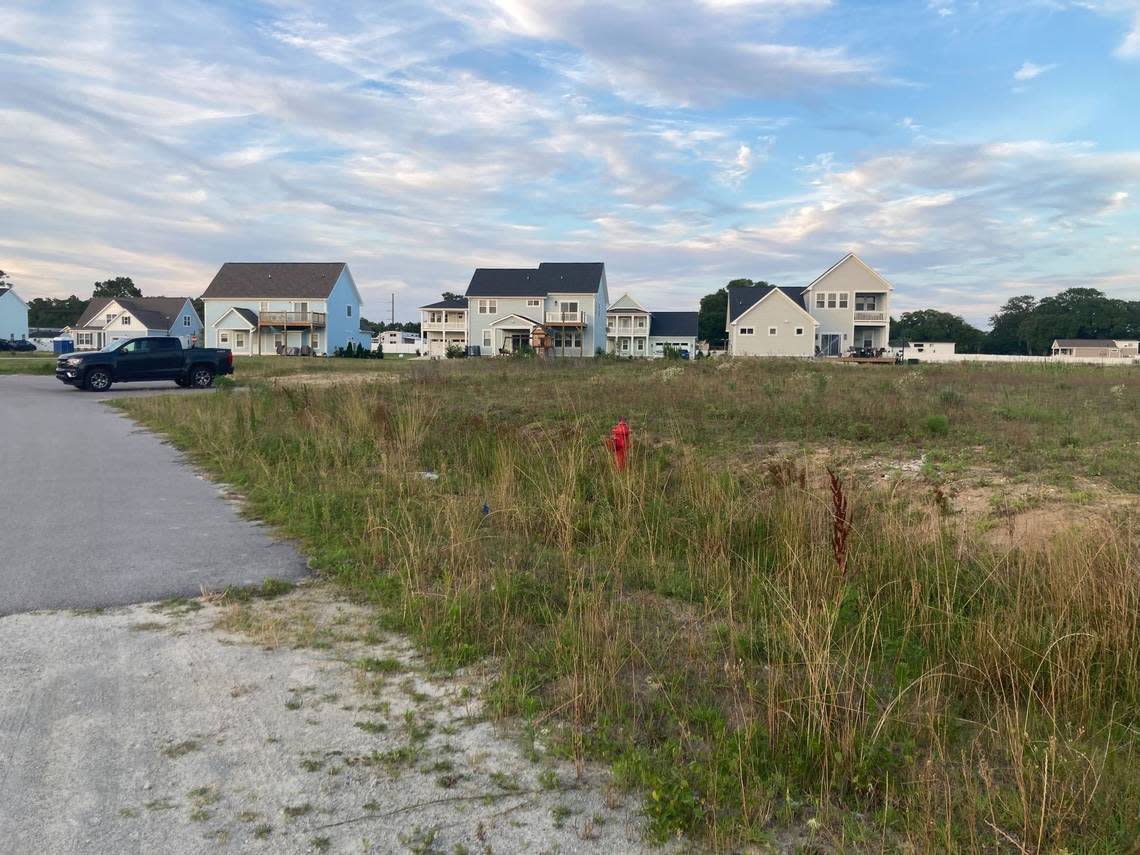NC senator removes controversial archaeological law changes, says they need more work

The North Carolina Senate voted unanimously Wednesday to strike changes requiring state archaeologists to tell potential buyers if land they want to buy contains artifacts from legislation tweaking a number of state environmental rules.
Initially, the archaeological provision in House Bill 385 would have allowed developers in designated areas of environmental concern to “incidentally” disturb archaeological sites, drawing the ire of the N.C. Department of Natural and Cultural Resources and Native American tribes.
Much of the public attention around the bill quickly shifted to a development in Carteret County’s Cedar Point that had long been seeking a Coastal Area Management Act permit from the N.C. Division of Coastal Management. The Office of State Archaeology is one of the agencies consulted as part of that permitting process and, after thousands of artifacts were found on the site, has pushed for it to be conserved in a conservation area or excavated.
Since originally being proposed in early June, the focus of the provision had shifted. Instead of allowing developers to push forward with development, it tried to prevent the purchase of land like the area in Cedar Point where artifacts could stymie building.
The bill said developers and land buyers in areas of environmental concern could ask DNCR’s archaeologists whether there is reason to believe a site contains archaeological resources as part of the due diligence process. The updated provision also would have required state archaeologists to seek funding to purchase land in areas of environmental concern that they know contain artifacts.
“We’re just doing away with that. We need some more time to work with that, bring some more stakeholders online and make sure that’s an adequate bill and a very good bill going forward. We’ll do that in the long session,” Sen. Norm Sanderson, a Pamlico County Republican, said while introducing the amendment.
The amendment to strike the language passed unanimously, with all 47 senators who were present voting for it.
State cultural resources officials previously said the updated proposal was an improvement over the original but that they found troublesome a section saying they couldn’t limit development for three years after saying they didn’t know of any archaeological resources on a site.
During a Senate Rules meeting Wednesday, Sanderson had already hinted that the effort could be delayed until the long session next year. The Department of Natural and Cultural Resources, he said, already has a practice of providing information to property owners and potential buyers about archaeological resources on the property.
As the bill wended through the committee process, Sanderson had also referenced concerns that disclosing archaeological sites to potential buyers could lead to artifacts being looted. There was a chance, Sanderson said in the Rules Committee, that the legislature would require the location of artifacts to be subject to a nondisclosure agreement between DNCR and developers, potentially including civil penalties.
Archaeological findings in Bridge View
At the Bridge View development in Cedar Point, state archaeologists initially suspected there might be artifacts based on a pair of 1970s discoveries in the area, as well as large archaeological sites that were found as part of other nearby developments.
Then, an archaeologist hired by a developer conducted test surveys at the site and found more than 2,000 artifacts, including 11 human burial sites. State archaeologists suspect that based on the pattern, there are likely additional burial sites spread across the parcel of land.
Chris Southerly, North Carolina’s state archaeologist, previously told The News & Observer that artifacts at the site date from about 1000 B.C. to 1600 A.D., indicating it was the site of human settlements for thousands of years.
“This is a long-term habitation site. This is a village where people lived for generations,” Southerly previously told The N&O.
Sen. Michael Lazzara has taken steps in recent days to try to distance the Cedar Point development from the proposed law.
The owners of Cedar Point Developers LLC, which is building Bridge View, live in Lazzara’s Onslow County district, and several have donated to his campaign in recent years. The development was the site of a protest by Native American groups that ended chaotically Sunday, with videos showing a man carrying a firearm and yelling as he confronted protesters and the Carteret County Sheriff’s Office reporting that a resident of the community had been stabbed in the arm with a small pocket knife.
“It needs to be made clear and very clear that neither the previous language nor this language does absolutely anything for the developer in question that has been written about. It doesn’t affect them at all,” Lazzara said in the Senate Judiciary committee Tuesday.
That is a shift from Lazzara’s earlier public remarks, where he answered questions in committee about the Cedar Point development and was quick to note that its builders had spent more than $500,000 on archaeological work.
Now, the Carteret County development is back where it was before the legislative effort, with the Coastal Area Management Act permit unapproved and DNCR still seeking solutions that protect the archaeological resources. The 21-acre site remains largely undisturbed.
This story was produced with financial support from the Hartfield Foundation and Green South Foundation, in partnership with Journalism Funding Partners, as part of an independent journalism fellowship program. The N&O maintains full editorial control of the work. If you would like to help support local journalism, please consider signing up for a digital subscription, which you can do here.


